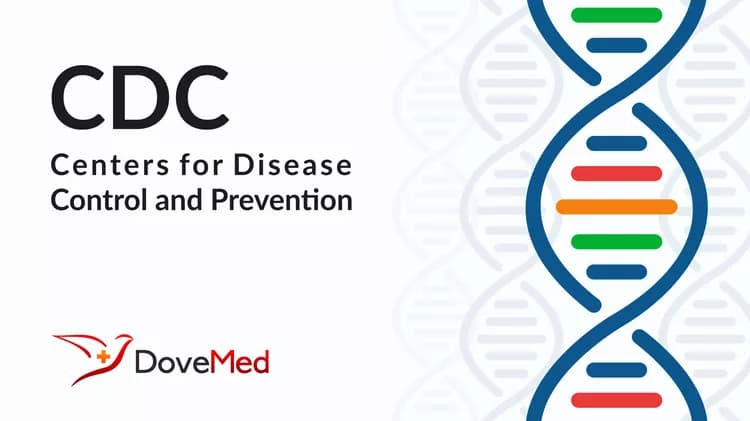
Overall Syphilis Rate Rises for First Time Since 1990
Overall Syphilis Rate Rises for First Time Since 1990
Despite continued declines among African Americans and women of all races, overall rates of primary and secondary syphilis have increased slightly for the first time in more than a decade, according to a new report from the Centers for Disease Control and Prevention (CDC). The report, published in the November 1 issue of CDC's Morbidity and Mortality Weekly Report, found that cases of primary and secondary syphilis in the United States rose by 2 percent between 2000 and 2001 (5,979 cases in 2000 to 6,103 cases in 2001). The overall syphilis rate in the United States increased from 2.1 per 100,000 people to 2.2 per 100,000 people, the first such increase since 1990.
The report, by CDC epidemiologist Dr. James Heffelfinger, attributed the slight increase to syphilis diagnoses among men. Syphilis rates among U.S. men rose by 15.4 percent between 2000 and 2001, an increase that coincided with outbreaks among gay and bisexual men in several U.S. cities.
These increases contrast with significant and sustained progress in syphilis elimination in populations and areas where syphilis rates are highest-among African Americans and individuals living in the South. Syphilis cases among African Americans declined by 9.9 percent between 2000 and 2001 (3.5 percent and 18.1 percent among African-American men and women, respectively). Additionally, although the South continues to have the largest proportion of syphilis cases (56 percent of total U.S. cases), there was an 8 percent decline in syphilis rates in this region. Syphilis cases among women overall declined by 19.5 percent. These declines were consistent with those noted every year since CDC began syphilis elimination efforts in 1998, targeting groups and regions at highest risk.
"These data show that a careful, concerted effort to eliminate this disease can work. Ultimately, our success will depend on the continued and careful targeting of our prevention resources to those areas and populations most affected by syphilis, including gay and bisexual men," said Dr. Ronald O. Valdiserri, deputy director of CDC's HIV, STD and TB prevention programs.
New Challenges
CDC officials said that increases in syphilis among gay and bisexual men of all races pose new challenges to U.S. efforts to eliminate the disease. Syphilis cases among white and Latino men increased by 63 percent and 50 percent, respectively, from 2000 to 2001. Additionally, although African-American men were the only men in any racial or ethnic group to experience a decline, the 3.5 percent decline among African-American men represents a significant slowing in the large decline reported last year (15 percent decline from 1999 to 2000).
The report indicates that the increases seen among men are associated with recent syphilis outbreaks among gay and bisexual men of all races and highlights outbreaks reported in Chicago, Los Angeles, New York City, San Francisco, Seattle and Miami.
Health officials said that because the risk behaviors for syphilis and HIV are similar, and because syphilis lesions increase risk of HIV transmission between two and five times, outbreaks among gay and bisexual men could also signal a potential increase in HIV transmission.
"Our challenge-and the challenge for gay and bisexual communities across America-is to underscore the connections between syphilis and HIV, and to renew the kind of commitment these communities brought to HIV prevention in the early years of the epidemic," Valdiserri said.
CDC is actively investigating the factors that have made some gay and bisexual men particularly vulnerable to syphilis, working with community organizations and local health departments on research and health interventions to understand current trends and avoid future outbreaks. CDC also is working to improve national STD surveillance to include information on risk behavior, including same-gender partners.
In recent years, CDC has dispatched rapid response teams to help local health departments control outbreaks; helped develop Internet interventions to alert men to the dangers of syphilis transmission and the need for testing; funded community health campaigns; intensified HIV prevention efforts; and used mobile vans and other innovative strategies to make syphilis testing available in predominantly gay neighborhoods, bathhouses, HIV clinics and community health centers.
Local Data
The CDC report also highlighted syphilis trends among counties across the United States. The report found that half of the nation's syphilis cases were concentrated in 20 counties and one independent city (see attached table). Overall, 80 percent of all U.S. counties did not report a single case of primary or secondary syphilis in 2001. Despite the increase in syphilis cases among gay and bisexual men, CDC officials said that the national goal of eliminating syphilis by 2005 (defined as 90 percent of counties syphilis-free) remained in effect.
"We cannot and should not accept a rise in syphilis cases in any population as the 'way things are'," said Valdiserri. "We're beating this disease in the communities most disproportionately affected by syphilis, and we have to continue our efforts to achieve and maintain the elimination of this disease."
# # #
CDC protects people's health and safety by preventing and controlling diseases and injuries; enhances health decisions by providing credible information on critical health issues; and promotes healthy living through strong partnerships with local, national, and international organizations.
Related Articles
Test Your Knowledge
Asked by users
Related Centers
Related Specialties
Related Physicians
Related Procedures
Related Resources
Join DoveHubs
and connect with fellow professionals

0 Comments
Please log in to post a comment.